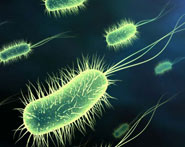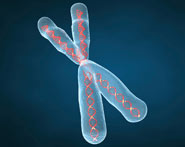


 النبات
النبات
 الحيوان
الحيوان
 الأحياء المجهرية
الأحياء المجهرية
 علم الأمراض
علم الأمراض
 التقانة الإحيائية
التقانة الإحيائية
 التقنية الحيوية المكروبية
التقنية الحيوية المكروبية
 التقنية الحياتية النانوية
التقنية الحياتية النانوية
 علم الأجنة
علم الأجنة
 الأحياء الجزيئي
الأحياء الجزيئي
 علم وظائف الأعضاء
علم وظائف الأعضاء
 الغدد
الغدد
 المضادات الحيوية
المضادات الحيوية|
Read More
Date: 2025-01-26
Date: 2025-03-11
Date: 2025-01-30
|
Type of test Blood; urine
Normal findings
Normal values vary for different amino acids.
Test explanation and related physiology
Amino acids are “building blocks” of proteins, hormones, nucleic acids, and pigments. They can act as neurotransmitters, enzymes, and coenzymes. There are eight essential amino acids that must be provided to the body by the diet. The essential amino acids must be transported across the gut and renal tubular lining cells. The metabolism of the essential amino acids is critical to the production of other amino acids, proteins, carbohydrates, and lipids.
When there is a defect in the metabolism or transport of any one of these amino acids, excesses of their precursors or deficiencies of their “end product” amino acid are evident in the blood and/or urine.
Clinical manifestations of these diseases may be precluded if diagnosis is early and if appropriate dietary replacement of missing amino acids is provided. Usually, urine testing for specific amino acids is used to screen for some of these errors in amino acid metabolism and transport. Blood testing is very accurate. Federal law now requires hospitals to test all newborns for inborn errors in metabolism including amino acids. Testing is required for errors in amino acid metabolism such as phenylketonuria (PKU), maple syrup urine disease (MSUD), and homocystinuria.
A few drops of blood are obtained from the heel of a new born to fill a few circles on filter paper labeled with names of infant, parent, hospital, and primary physician. The sample is usually obtained on the second or third day of life, after protein- containing feedings (i.e., breast milk or formula) have started.
After a presumptive diagnosis is made, amino acid levels can be detected in blood or amniotic fluid. The genetic defects for many of these diseases are becoming more defined, allowing for even earlier diagnosis to be made in utero.
Interfering factors
• The circadian rhythm affects amino acid levels. Levels are usually lowest in the morning and highest by midday.
• Pregnancy is associated with reduced levels of some amino acids.
* Drugs that may increase amino acids include bismuth, heparin, steroids, and sulfonamides.
* Drugs that may decrease some amino acid levels include estro gens and oral contraceptives.
Procedure and patient care
• See inside front cover for Routine Blood Testing.
• Fasting: yes
• Blood tube commonly used: red
• Obtain a history of the patient’s symptoms.
• Obtain a pedigree highlighting family members with amino acid disorders.
* A 12-hour fast is generally required before blood collection.
During
• Usually a 24-hour random urine specimen is required. See inside front cover for Routine Urine Testing.
• Screening is done on a spot urine using the first voided specimen in the morning.
After
• Generally, genetic counseling is provided before testing and continued after results are obtained.
Abnormal findings
Increased blood levels
Specific aminoacidopathies (e.g., PKU, maple syrup disease)
Specific aminoacidemias (e.g., glutaric aciduria)
Increased urine levels
Specific aminoacidurias (e.g., cystinuria, homocystinuria)
Decreased blood levels
Hartnup disease
Nephritis
Nephrotic syndromes



|
|
|
|
التوتر والسرطان.. علماء يحذرون من "صلة خطيرة"
|
|
|
|
|
|
|
مرآة السيارة: مدى دقة عكسها للصورة الصحيحة
|
|
|
|
|
|
|
نحو شراكة وطنية متكاملة.. الأمين العام للعتبة الحسينية يبحث مع وكيل وزارة الخارجية آفاق التعاون المؤسسي
|
|
|